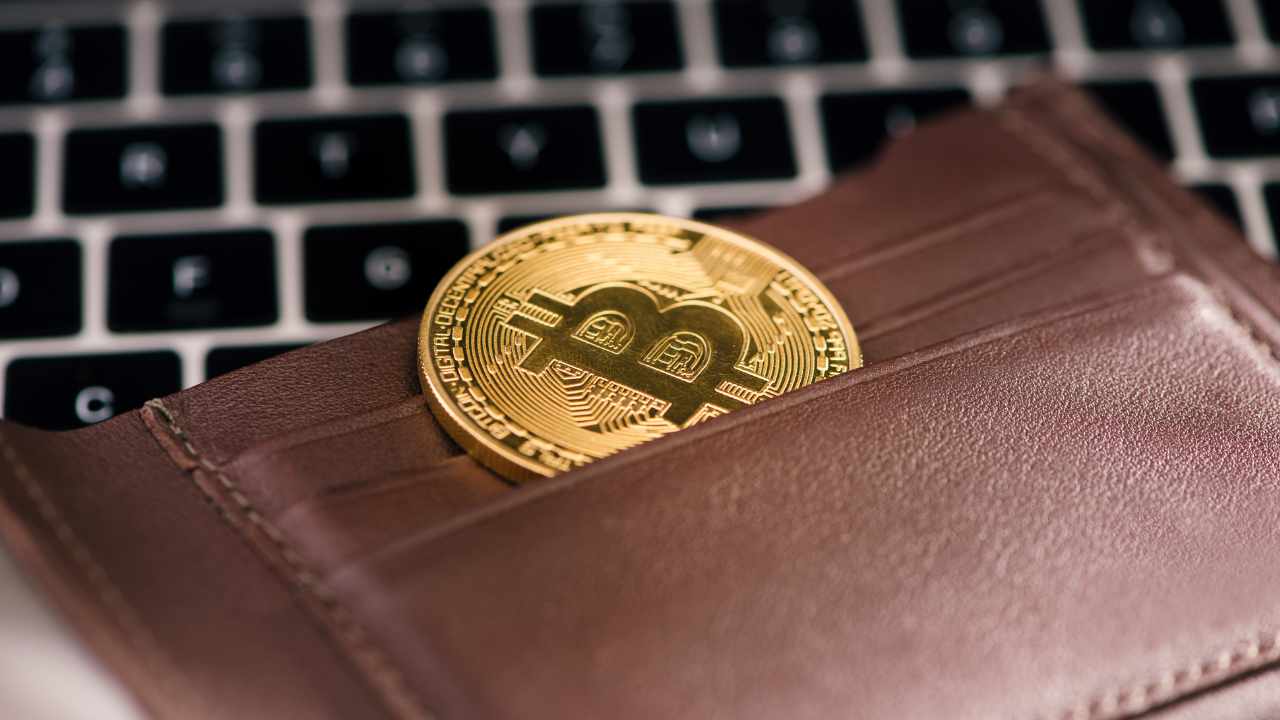What Exactly Is A Crypto Wallet?
What is a crypto walletWe know a wallet as a thing you keep your money in. In cryptocurrency, we use the word wallet to refer, likewise, to a p...? What does it do?
With paper currency, you need something to store it in. So, people use a wallet. This term “wallet” is therefore something people understand. For this reason, it is used for crypto, too.
But, a wallet for crypto works fundamentally different.
In fact, a crypto wallet doesn’t actually store anything. Your money isn’t in the wallet.
See, your coins (whether it be Bitcoin or something else) are all on the public blockchainBlockchain is the technology that underlies cryptocurrency. Not just Bitcoin, but all of them. Blockchain is a kind of .... When you own, say, Bitcoin… your Bitcoin is out there on the blockchain that is distributed all around the world. That BTC you own is just assigned to your wallet address.
Your wallet is based on cryptography. And when you own the “keys” to your wallet, it means you control the cryptocurrency assigned to it. It gives you the ability to spend it. Without those keys, it isn’t your’s.
Let’s dive into just a bit further on how it works…
Your Wallet & How It Works
It isn’t necessary to understand all the geekery on how this works. But, you do want to get the concept of it.
Cryptography is simple a science of how to communicate privately in the presence of third parties. The word comes from kryptós, which means “hidden, secret”… and graphein which means “to write”. In the past, this was often used in times of war and used various ways to encrypt messages and be able to pass them around privately. On the outside, the message would look like a bunch of gibberish, but if you had the code to decrypt it then you could read it.
A crypto wallet is based on cryptography. Specifically, public-key cryptography. There are two components:
- The public keys. This is basically your wallet address. You can distribute this to anybody you wish, therefore allowing your wallet to receive funds.
- The private keys. This is your secret key and must always be kept secure as this is what allows you to SEND the funds.
Now, these keys (both public and private) are long, nasty looking things. It is generated by the encryption algorithm. So, there is a mechanism in place to help you remember it or be able to recover it.
That’s the recovery phrase.
The recovery phrase is a set of words (12-24 words in length). This set of words are basically the keys to the whole kingdom and it will allow you to regenerate new private keys.
At the basic level, this is how a crypto wallet works. Your wallet isn’t actually storing anything. Your coins are not on the wallet. Instead, the wallet is a cryptographic claim to the coins on the public blockchain. The public wallet address allows people to send funds to you… and the private keys for that wallet allow you to control and send the funds.
Types Of Crypto Wallets
In traditional finance, people are used to trusting a bank to secure funds. They don’t usually have to think much about it. If you store cash on hand, then obviously you’d need to think about something like a safe.
In the world of cryptocurrency, you have choices. You can trust a bank… or you can be your own bank.
It comes down to… who holds the private keys?
The simplest type of wallet would be a custodial wallet. This is where you’re trusting a third party with custody of your cryptocurrency. This is most like the bank.
If you store funds online anywhere, such as an exchangeAn exchange is a platform that enables you to exchange one currency for another currency. It is a place where people can... like Coinbase, Gemini or any other exchange… then those are custodial wallets. They are your funds, stored in your wallet addresses with those companies. But, THEY hold the private keys.
Now, there are pros and cons with this and you have to decide what’s more important to you.
On one hand, this means you’re trusting a company and their security people to secure your private keys. You don’t have to worry about losing them. In most cases, this is fine. It is just like a bank. Of course, on the flip side, if they hold the private keys, then technically they could block access to your funds or lose your funds. It isn’t that likely (especially if you’re using a reputable company), but it isn’t impossible.
Now, the opposite of a custodial wallet would be, of course, the non-custodial wallet. In other words, self-custody. You control the keys. You’re responsible for the security of those keys. You can act as your own bank.
Non-Custodial wallets have two types:
- Software wallet. A piece of software on your computer or device that manages the wallet and the keys.
- Hardware wallet. An independent piece of hardware with the specific purpose of managing the wallet keys.
Software wallets are common and can run either as software on our computer or even on your mobile phone. The software is merely managing the keys. Some have felt it was weird or unsafe to use a software wallet because… what if you lost your device or your hard drive crashes. Well, just remember… your funds are not ON the device. Like any wallet, you have a recovery phrase. So, you can lose the device or delete the software and you’ll be fine as long as you have your recovery phrase.
Hardware wallets are the MOST secure method of storing crypto. It is a dedicated piece of hardware that has the express purpose of storing private keys in an encrypted way on the device. The device is not internet-connected, so has no risk of hacker penetration. It has no keyboard, so it cannot run a keyboard sniffer to detect passwords. It isn’t even capable of running software like that.
Hardware wallets are usually small and look like USB drives. They can take any form, though.
What Type Of Wallet Is Best?
If you’re really new to cryptocurrency and don’t have too much, I think it is perfectly reasonable to use the wallet provided to you with the exchange you bought it on.
For people here in the United States, I think Coinbase is probably the easiest option. You will automatically get wallets for each of the coins they support. If you buy the coinSometimes referred to as a token, or a coin. The two terms are used pretty interchangeably. Essentially, it is a digital... there, you can store it there. These are custodial wallets, so you don’t have the keys. But, Coinbase is a very established company, very regulatory compliant and they take security very seriously.
There is a higher level of responsibility (and, to some, risk) when you are responsible for the security of your own keys. Some prefer it that way. But, if you’d rather somebody else be responsible, then just use a custodial wallet.
Now, once you acquire higher amounts of coin, I am personally a believer in taking custody of your own coins. Or at least, part of it.
I look at a self-custody wallet like my own vault. And only I control it. No company can control my access to what’s in that vault.
For me personally, I keep a majority of my crypto holdings on a Ledger Nano. The Ledger is, perhaps, the most popular hardware wallet on the market right now. I also own a Keepkey and have some coins on that, too.
I think a good strategy would be:
- Keep some funds on exchanges or custodial wallets if you have a use for it. For instance, if you may do some trading with it, or if you’re earning a return on it.
- Keep the rest in your vault. In other words, a hardware wallet.
If you get further down the rabbit hole with this stuff, you could end up owning coins that are not supported by a hardware wallet and have their own wallet. That’s fine. In all likelihood, it will be a software wallet specific to that blockchain. If that’s the case, just use that.







